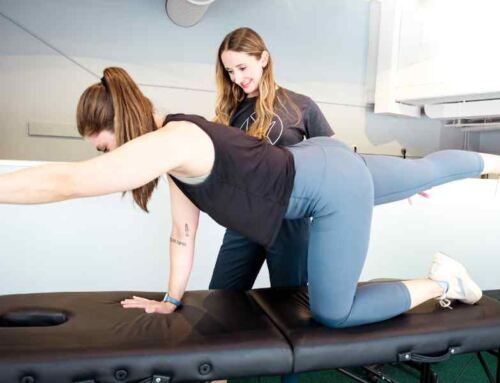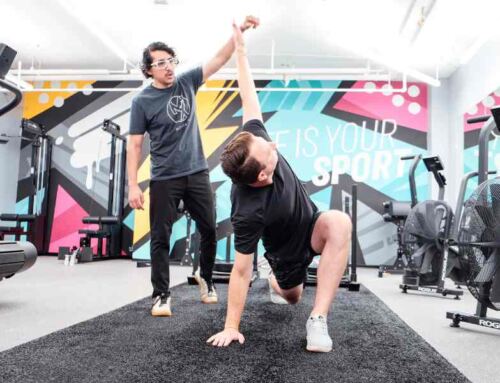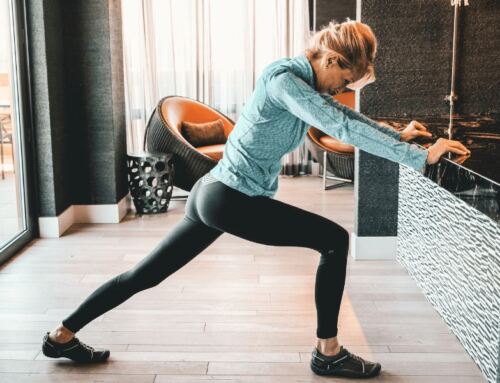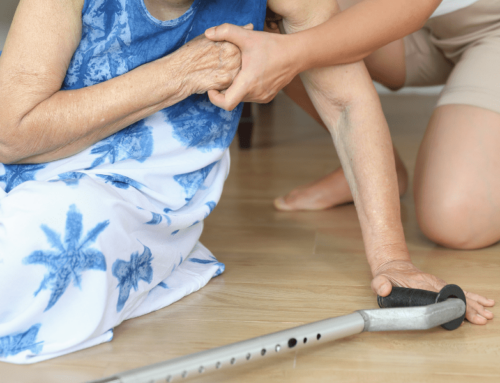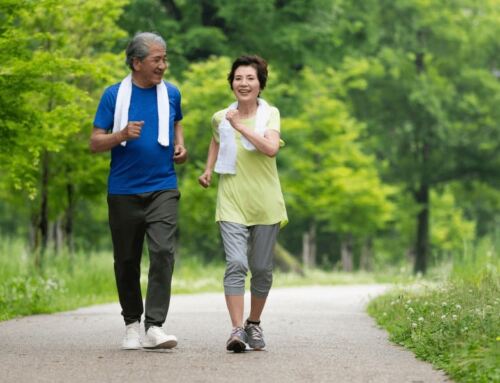You’ve got better things to do than to worry about falling… like living confidently and safely on your feet. However, if balance is something you’re concerned about, know that you are not alone. 1 in 4 Americans over the age of 65 will fall each year, placing falls as the leading cause of both fatal and nonfatal injuries for older Americans [1]. While not every fall leads to serious consequences, each year, over 3 million emergency room visits are a result of falls [2]. Falls are the most common cause of traumatic brain injuries and an astounding 83% of hip fracture deaths were caused by falls in 2019 [3].
Balance issues have no age restriction and regardless of the cause of instability, the effect is the same: The motivation to move declines drastically. Quality of life is defined as “the degree to which an individual is healthy, comfortable and able to participate in or enjoy life events.” [4]. A fall can take a toll on your quality of life dramatically, and what fun is a life where you can’t do the things you love doing?
Falls can shake your confidence in any sort of movement, big or small, causing you to be less likely to participate in the activities you once loved doing. One small event can have a cascading effect into other aspects of your life.

Understanding the Why
Understanding the cause of your instability allows you to know what to address on your road to recovery. Some common risk factors for falling include lower body weakness, decreased gait speed, vision problems, muscular pain, poor balance, lack of sensation, decreased grip strength, improper footwear, home hazards and distractions [5].
Once you identify the specific cause for your balance limitations, you might find it beneficial to start with a specialist in the field. For example, if you have balance issues because of dizziness or numbness, you might benefit from seeing a neurologist. If your balance issues are due to poor visual acuity and depth perception, an ophthalmologist may be the provider for you. Addressing the underlying causes of falling will get you better sooner. Once these underlying issues are cleared, a physical therapist can help address the many other factors leading to falls.
One fall doubles the risk of falling again [6]. This statistic alone highlights the importance of prevention and taking action if you find yourself in this position. There are a lot of things that can be done to reduce the risk of falls and you won’t be alone in your journey to better balance.
The (Falling) Domino Effect
You might find yourself changing your daily habits in order to feel more comfortable and reduce the risk of falling. Things like taking the elevator instead of the stairs, or parking closer to the grocery store instead of further back in the parking lot are steps you might catch yourself taking. You may be more inclined to pass up the chance to take your grandchildren to park if you’re worried about feeling unstable on the sand or gravel. Rather than sitting on the ground to play with your grandkid, you’ll play from the couch due to fear of difficulty getting up.
Not only are there physical effects that take place after a fall, but there are big social components as well. You might feel less comfortable engaging in social behaviors like going on a walk or bike ride with friends now too, leading to further physical decline and social isolation.
To understand how this self-preservation strategy can have a more negative impact in the long run, it’s helpful to familiarize yourself with something called the Fear-Avoidance Model. This model states that “when a person experiences pain, negative thought processes such as catastrophising (an exaggerating negative perception of pain) leads to fear of movement and avoidance of behaviors that the person believes may cause further damage or more pain.” [7]. This behavior can become cyclic, where a patient may stop physical activity altogether as a result of he or she deeming it to be dangerous, which then leads to greater instability and weakness. Movement is actually the key to improving function, not the enemy.
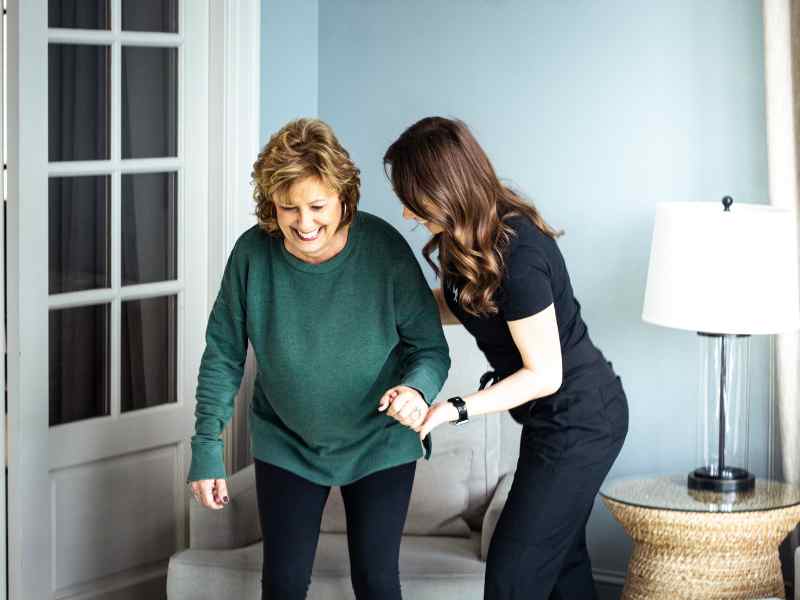
What You Can Do
Many of the above risk factors are also modifiable factors. This means that there are things you can do to address each item to reduce your risk of falling. The first step is to figure out why the falls are happening, and a physical therapist can help you determine a cause after time spent getting to know you, taking a detailed history and listening to your unique story.
If your falls happen when you go from sitting to standing, we can break down this movement into smaller pieces and practice it as an exercise. If your falls happen when you are distracted or not paying attention, we can work on dual-task and cognitive training. If your falls are due to your home environment, your therapist can ensure your home is properly lit, ledges and thresholds are clearly marked and area rugs are secured tightly to the floor to avoid tripping.
Another modifiable factor is using an assistive device, like a walker or cane. Your therapist can determine if you are a good candidate for an assistive device, which device would be best for you, if the device is properly fit for you and will teach you how to walk with one (hint: it’s not as intuitive as you think).
A physical therapist can also determine which muscles need to be strengthened to help target weaker areas. Important muscles for balance are your thighs, hips and core. Practice makes perfect, so the more you rehearse, the easier movement will feel and your confidence will skyrocket.
Are You At Risk?
Wondering how your own balance measures up? A physical therapist can walk you through a variety of tests to determine your risk of falling. Some of these tests include the Timed Up and Go (TUG), Berg Balance Scale and the 5 Times Sit-to-Stand. These tests are performed on your first day of physical therapy, then about once every month to track your progress and set more targeted goals based on your performance.
If you aren’t yet seeing a physical therapist, give this quick self-assessment a try to help determine if you might benefit from scheduling a session.
The 4-Stage Balance Test gives you an insight into whether you may be at a higher risk for falls by having you balance in 4 different positions. If you’re trying this at home, make sure a wall or counter is nearby to grab onto just in case. Try to hold each of the positions for 10 seconds:
- Standing with your feet side by side
- Standing with one foot halfway forward so that your big toe is touching the arch of your other foot
- Standing with one foot fully in front of the other so that your heel is touching the tip of your other big toe
- Standing on one foot
How did you do? What may seem like a simple exercise can provide meaningful insight into your balance status. Balance is frequently challenged in daily life, whether it’s stepping up onto a curb, turning to the side to move past someone in a tight aisle of a grocery store, rising from your chair or toilet, or bending down to pick up something you dropped on the floor. Identify any weaknesses so you can remain in control.
How Movement X is Made for Balance Patients
We understand it can be somewhat of a daunting task to get to a physical therapy clinic. If you don’t feel comfortable walking to your car, getting in and out of the car, and then walking to the clinic from the parking lot, MovementX is perfect for you. You spend the most time in your home, so why not practice in that exact space?
Our goal is to maintain your functionality and independence by making sure you can cook yourself a meal, walk to the bathroom and clean your home without running into any issues. It’s easier to start investing time and effort in your balance now before a fall happens, versus working on it after the fact. Prevention is the name of the game in healthcare, and your balance is no different.
Conclusion
Balance isn’t just about staying upright; it’s about staying independent, active and in control. The more you are aware of your relative risk of falling, the more you can get ahead of it before it slows you down. No one wants to be sidelined from doing the things they love. No one should have to turn down a doubles tennis match, a walk in the neighborhood or an opportunity to babysit their grandchildren all because they are fearful of falling. Identify the risks, seek help when needed and get back to the life you love.
References
- Centers for Disease Control and Prevention. Facts about falls. Older Adult Fall Prevention. Published May 9, 2024. https://www.cdc.gov/falls/data-research/facts-stats/index.html
- CDC. WISQARS Leading Causes of Death Visualization Tool. Centers for Disease Control and Prevention. Published 2023. https://wisqars.cdc.gov/lcd
- Moreland BL, Legha JK, Thomas KE, Burns ER. Hip Fracture-Related Emergency Department Visits, Hospitalizations and Deaths by Mechanism of Injury among Adults Aged 65 and Older, United States 2019. Journal of Aging and Health. 2022;35(5-6):089826432211324. doi:https://doi.org/10.1177/08982643221132450
- Jenkinson C. Quality of life. In: Encyclopædia Britannica. ; 2020. https://www.britannica.com/topic/quality-of-life
- Moreland B, Kakara R, Henry A. Trends in nonfatal falls and fall-related injuries among adults aged ≥65 years — United States, 2012–2018. Morbidity and Mortality Weekly Report. 2020;69(27):875-881. doi:https://doi.org/10.15585/mmwr.mm6927a5
- Centers for Disease Control and Prevention. Facts about falls. Older Adult Fall Prevention. Published May 9, 2024. https://www.cdc.gov/falls/data-research/facts-stats/index.html
- Physiopedia. Fear Avoidance Model. Physiopedia. Published 2014. https://www.physio-pedia.com/Fear_Avoidance_Model
About the Author
Dr. Natalie de Selding is a physical therapist and certified strength and condition coach based in Arlington, VA. She treats orthopedic conditions, athletes and sports injuries, neurological conditions, and aging patients. With a focus on evidence-based care and advanced certifications in dry needling an barbell lifting assessment, Dr. Natalie de Selding is eager to help anyone who is motivated to move.



